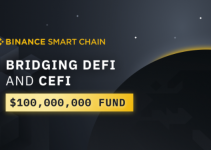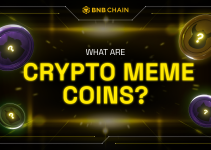
A futures contract is an agreement for an asset at a predetermined price that will occur on a later date. Going long or short on a futures contract means that you can lock in the forward buying price or selling price of a futures contract on the assumption that you hold the contract until its delivery date.
A futures price is based on its current spot price plus the cost of carry during the interim before delivery. The cost of carry of a futures contract is represented by the basis.
The basis can be simply described as the difference between the spot price of a crypto asset and its futures price. For instance, if the spot price of Bitcoin is $10,000 and the market price of Binance Futures BTCUSD quarterly contract is $10,050, the basis will be calculated as; Spot – Futures = $10,000 – $10,050 = -50.
The basis can be a positive or negative number. A positive basis relationship means that the spot price trades higher than its futures price; vice versa. Basis may fluctuate due to changes in supply and demand, but due to the forces of arbitrage, it will eventually go to zero at the point of expiry.

It is important for miners and hodlers to understand this concept because the relationship between spot and futures prices affects the value of the contracts used in hedging. In general, the basis is used by investors to gauge the profitability of delivery of cash or the actual and is also used to search for arbitrage opportunities. Also, basis is often used by traders to determine the best time to buy or sell a crypto asset, where decisions are based on whether the basis is strengthening or weakening.

Strong or Weak Basis
The basis is not a constant, it changes from time to time. If the basis gains in value, we say the basis has strengthened. Conversely, if the basis declines in value, we say the basis has weakened.
The main factors responsible for the changes in basis are usually shifts in short-term demand and supply.
If demand is strong and the available supply small, spot prices could rise relative to futures prices, causing the basis to strengthen.
On the other hand, if the demand is weak and a large supply is available, spot prices could fall relative to the futures price, causing the basis to weaken.
Contango vs. Backwardation – why is it important to hedgers?
The shape of the forward curve is important to hedgers and speculators, the curve indicates whether crypto futures markets are in contango or backwardation.
When a market is in contango, the price of a futures contract is higher than the spot price.

Conversely, when a market is in backwardation, the price of the futures contract is lower than the spot price.

The shape of the forward curve is the most important factor every hedger and trader must consider before employing a hedging strategy.
A hedge consists of two components: 1) The underlying exposure 2) The hedging instrument.
Therefore, hedging strategies carry basis risk. When a Bitcoin miner employs a hedging strategy, he exchanges price risk for basis risk.
Basis risk occurs when there is a divergence in the differential between the spot price and the futures price. The main source of basis risk is the unexpected strengthening or weakening of the basis.
While a hedged strategy protects from outright price risk, the hedger is still exposed to basis risk. Although the basis can and does fluctuate, it is still generally less volatile than either the spot or futures price.
In the following scenarios, we will observe how basis risk impacts the profitability of hedgers.
When a miner puts on a short hedge by selling futures, the hedge creates a position where the miner is now long the basis.
If the spot price of Bitcoin increases relative to the futures price, the basis strengthens. This would result in a positive return for the miner.

In this illustration, assume a miner sells 100 contracts of BTCUSD Quarterly 0925 to hedge his $10,000 worth of Bitcoin exposure.
- The miner puts on his short hedge on T+0, where prices of spot Bitcoin trades at $10,000 while its futures price is at $10,100. This translates to a basis of -100.
- On T+1, a piece of major news drove Bitcoin prices higher causing a spike in near-term demand for spot assets.
- Consequently, this event caused spot prices to trade higher than futures, causing the basis to strengthen from -100 to 0.
- For the miner, this effect resulted in higher market value for his spot assets while his short hedge remains unchanged. Overall, it resulted in a net positive trade for the Bitcoin miner.
In an alternate scenario, if the futures price of Bitcoin increases relative to the spot price, the basis weakens, which results in a negative return for the miner.

In our 2nd illustration, both spot and futures prices increased.
- However, on T+1, the prices of BTC futures increased more than the spot, causing the basis to weaken from -100 to -150.
- This means, despite a positive gain in his underlying exposure, the losses on his short hedge exceeds and resulted in a net negative return for the miner.
In both scenarios, when it finally comes time for the miner to sell his Bitcoins in the spot market, the miner closes the futures position by buying back his short hedge.
If the basis is under -100 when the transaction is completed, the miner loses money on the basis hedge. If the basis is higher than -100, the miner makes money on the basis hedge.
How to start hedging cryptocurrencies
- Conduct research. Identify the need to hedge exposure and ensure that the basis and the shape of the forward curve are in favorable condition.
- Determine your parameters. Establish your risk tolerance by setting parameters. You may choose to hedge 50-75% of your exposure rather than the full 100%.
- Choosing the right product. Binance Futures’ quarterly contracts are the best instruments to employ hedging strategies. They are highly liquid, which means traders can transact trades efficiently with minimal or no slippage. There are no funding fees on Quarterlies or any products in the Delivery Futures line; this should be of great use for hedging for miners or long-term positional traders. And best of all, it offers the lowest taker and maker fees in the market!



